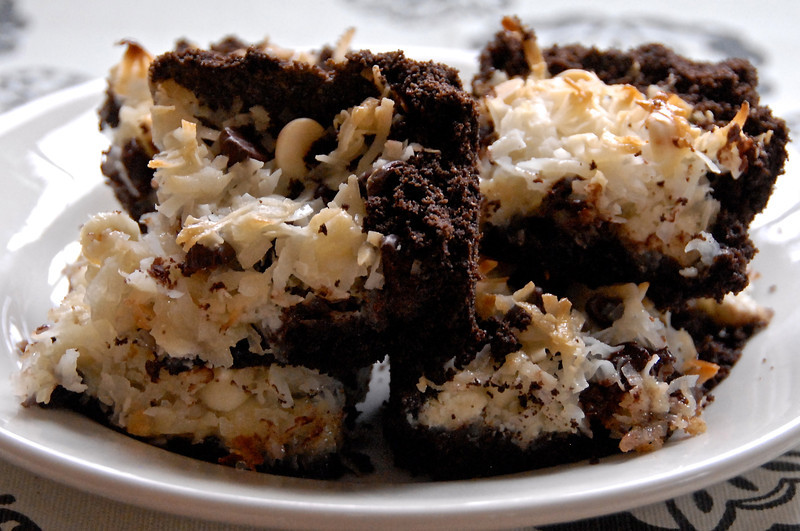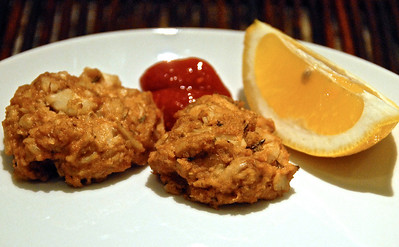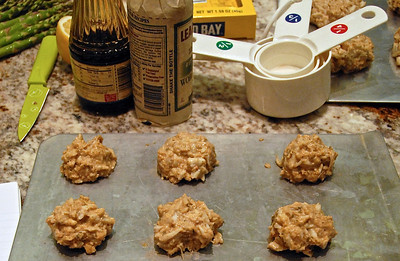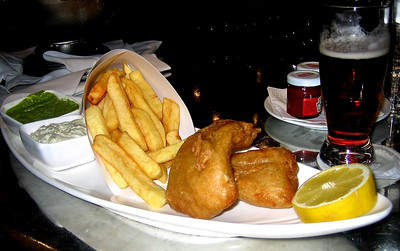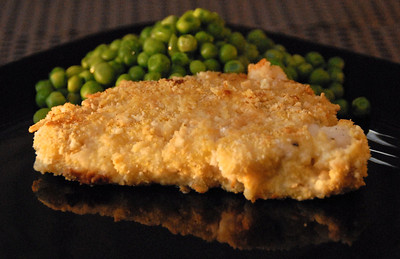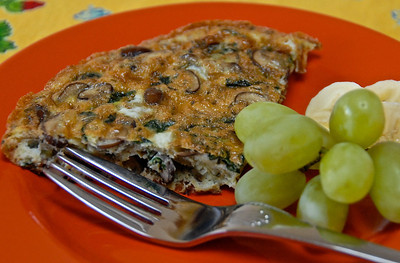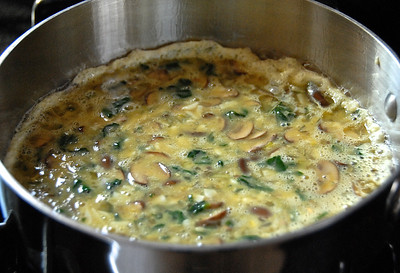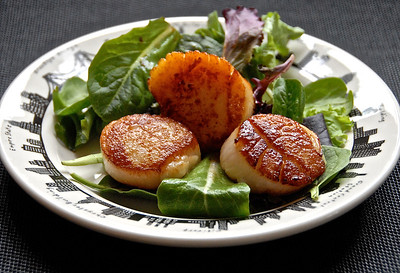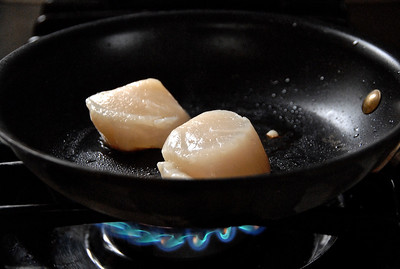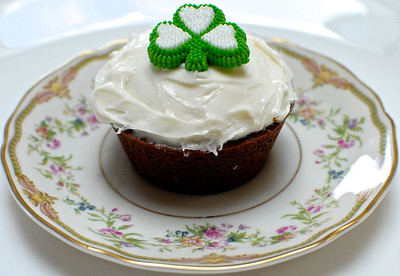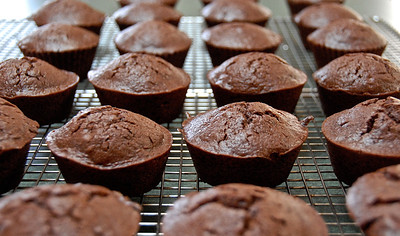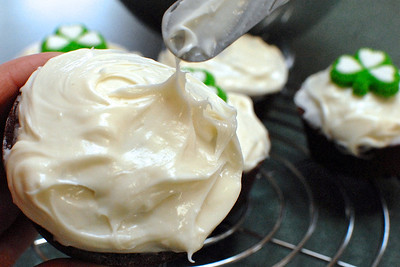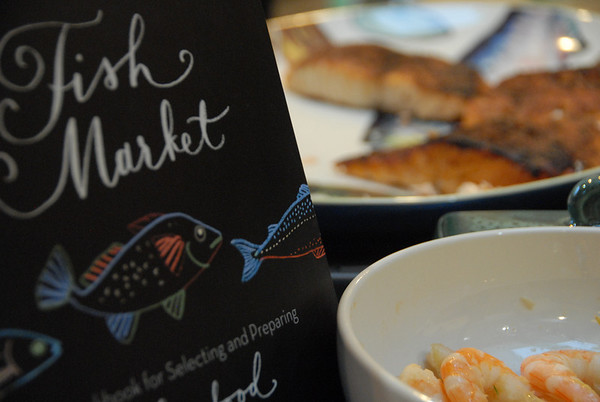
Fish Market and a few dishes from it
If you follow Kitchen Kat, you know that my first cookbook, Fish Market, has hit bookstore shelves. Published by Running Press, it covers 48 fish and shellfish and has handy, final chapter on seafood-friendly side dishes. As a longtime food writer, recipe tester and pescetarian (person who eats seafood but doesn’t consume meat or poultry), I am thrilled by its publication. Finally, I get to share all of my fish tales and recipes with you.
Although you know about the book, you may not realize that I’m throwing a big party in honor of it and you all are invited! On Friday, May 31st, at 7 PM I’ll host the official Fish Market launch party at the Towne Book Center in Collegeville, Pa. A spacious, well-stocked, independent bookstore, the Towne is conveniently located near our work-in-progress farmhouse. If you’re going to restore an old house in the country, let it be near a good bookstore.
Friday’s events include a sampling of dishes from my book, drinks, a brief talk about seafood, Q&A and a book signing. Thanks to our buddy Tom Ransom, you’ll also have a boatload of cool, seafood-related tunes to groove to. The party is open to the public. If you find yourself in suburban Philadelphia on Friday May 31st, stop by the Towne Book Center and get hooked on Fish Market!
If you don’t reside in the Philly area but want to attend a talk, book signing or cooking class, please check out the events page at FishMarketBook.com. You’ll find details about upcoming appearances there. Keep checking back for I’ll add more events. You never know. I could turn up at a bookstore, cooking school or event space near you.
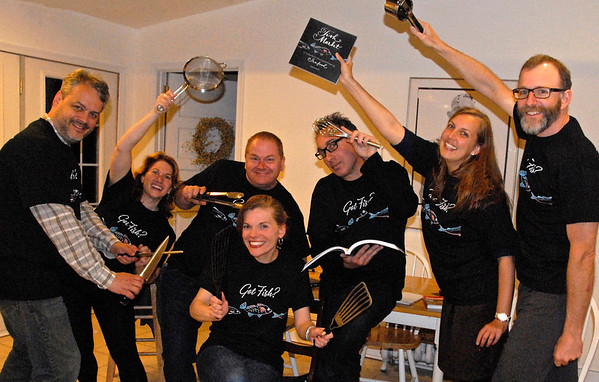
Kathy Hunt and her Fish Market-teers!
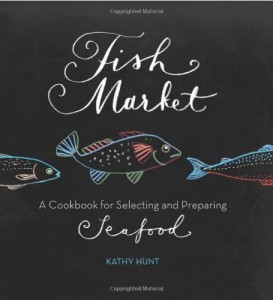
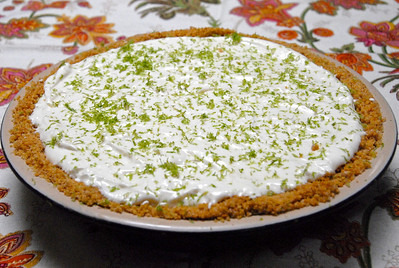 I’m not a fan of conflict. Ditto for controversy. Yet, in spite of this I’ve become embroiled in a battle to end all battles. No doubt, like most skirmishes, this one began harmlessly enough. Two weeks ago a friend, “Apple Jane,” made a key lime pie, brought it over to our place and served it for dessert. It was a nice, generous gesture but one that kicked off a hot dispute.
I’m not a fan of conflict. Ditto for controversy. Yet, in spite of this I’ve become embroiled in a battle to end all battles. No doubt, like most skirmishes, this one began harmlessly enough. Two weeks ago a friend, “Apple Jane,” made a key lime pie, brought it over to our place and served it for dessert. It was a nice, generous gesture but one that kicked off a hot dispute. 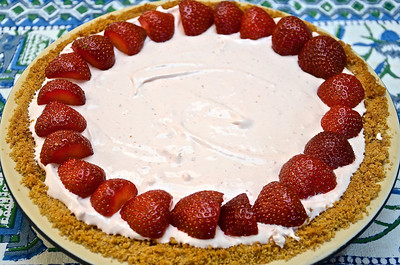 Although it’s been a whirlwind of a week, I couldn’t let Mother’s Day pass by without sharing a recipe in honor of my late mother and all the other hardworking moms around the globe.
Although it’s been a whirlwind of a week, I couldn’t let Mother’s Day pass by without sharing a recipe in honor of my late mother and all the other hardworking moms around the globe. 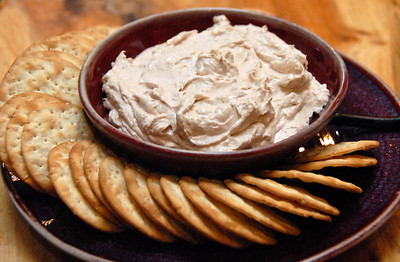 Over the past few weeks I’ve been inviting friends over for a series of “Pretend You’re at Williams-Sonoma Sampling Food” nights. On these evenings I ply them with recipes from my cookbook Fish Market in an attempt to see which dishes appeal to even the most apathetic seafood eaters. Unequivocally, they have gone for sardine spread. Considering how many had initially voiced their distaste for this small, iridescent fish, I’m both surprised and pleased by the discovery.
Over the past few weeks I’ve been inviting friends over for a series of “Pretend You’re at Williams-Sonoma Sampling Food” nights. On these evenings I ply them with recipes from my cookbook Fish Market in an attempt to see which dishes appeal to even the most apathetic seafood eaters. Unequivocally, they have gone for sardine spread. Considering how many had initially voiced their distaste for this small, iridescent fish, I’m both surprised and pleased by the discovery.